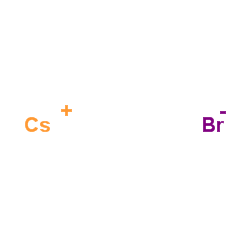Studies of the EPR g factor for Ni2+ ion in CsMgX3 (X=Cl, Br, I) crystals.
Wen-Chen Zheng, Xiao-Xuan Wu
Index: Spectrochim. Acta. A. Mol. Biomol. Spectrosc. 64(3) , 628-30, (2006)
Full Text: HTML
Abstract
The complete high-order perturbation formula of g factor, including not only the widely used crystal-field (CF) mechanism, but also the neglected change-transfer (CT) mechanism in the CF theory, is established for a 3d8 ion in cubic octahedral site. From the formula, the g-shifts Deltag (=g-gs, where gs approximately 2.0023, the value of free electron) of Ni2+ ion in CsMgX3 (X=Cl, Br, I) crystals are calculated. The results suggest that the g-shift DeltagCT due to the CT mechanism and the DeltagCF due to CF mechanism have the same sign and the importance of DeltagCT follows the order: CsMgI3: Ni2+>CsMgBr3: Ni2+>CsMgCl3: Ni2+. So, in the calculations of g or Deltag of 3dn MXm clusters in crystals, the contributions to g factor from both the CT and CF mechanisms should be taken into account in the case of heavy-element ligand ions, such as Br- and I- ions.
Related Compounds
| Structure | Name/CAS No. | Molecular Formula | Articles |
|---|---|---|---|
 |
Cäsiumbromid
CAS:7787-69-1 |
BrCs |
|
Electric conductivities of 1:1 electrolytes in high-temperat...
2010-03-21 [J. Chem. Phys. 132(11) , 114501, (2010)] |
|
Calix[4]pyrrole: a new ion-pair receptor as demonstrated by ...
2008-03-26 [J. Am. Chem. Soc. 130(12) , 4129-39, (2008)] |
|
The effect of small cations on the positive electrospray res...
2003-10-15 [Anal. Chem. 75(20) , 5468-74, (2003)] |
|
Purification of mucin glycoproteins by density gradient cent...
1992-10-01 [Anal. Biochem. 206(1) , 142-6, (1992)] |
|
Computational investigation of a new ion-pair receptor for c...
2012-06-01 [J. Mol. Model. 18(6) , 2291-9, (2012)] |